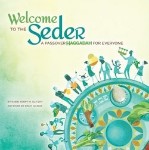Mysticism/Psych Course 3: Introduction video: Mysticism
The first video of the Modern European Mysticism and Psychological Thought class gave a working definition of mysticism and two approaches of its relation to psychology. The text of the summary below is taken verbatim from the transcript.
- Purpose:
- find new ways of looking at mystical texts and mystical life [… and] at psychology,
- learning skills: how to understand the mystical phenomena [… and] psychological phenomena
- We’ll be working on two levels
- logical structure for understanding modern psychology
- we’ll learn how to read texts.
- mysticism is […] a network of communities, which extends across thousands of years, across continents.
- Definition of mysticism: a means of experiencing reality, the everyday reality that we all experience, in a much more intense, powerful, focused, and, rich manner, that leads this reality to transform itself, until it becomes maybe an alternative reality…
- Mysticism is first of all a transformation of perception -> overlap between mysticism and psychology
- Two approaches
- First approach focuses on what’s shared: that mystics work with the same ingredients. They work with the human condition: with the human body, with the human mind, with the human psyche, psychology. And then they want to transform it. Mysticism is really the same phenomena in different cultures
- The second approach: Each tradition wants to build a different alternative universe to the one that we usually inhabit… the transformation of the reality that is shared is shared, but the way it transforms … goes in different directions. … There are different forms of mysticism rather than one form with different expressions.
- Both are right. … reality is shared, the transformations are different, and mysticism is a bit of both.
- Different cultures cultivate emotions in a different way
- Mysticism can have a shared psychology. Different mystical systems can have a shared psychology on one hand, and yet the way culture shapes emotion… the way we experience ourself, how much we experience ourself… can differ from culture to culture, from society to society, and therefore from one mystical system to another.
And now some personal comments As I was listening to the lecture I realized that I experienced disappointment due to lack of infotainment. The lectures and exercises of the last course I took, Creativity, Innoviation and Change, were entertaining. Dr. Garb’s first lecture though was the opposite: nothing else just him sitting in front of a blue screen and his expression was not very agitated either. I wouldn’t go as far as calling it monotone, but I had a bit of a hard time focusing. I have to retrain my expectations and re-learn to learn from more traditional lectures, with no props or visual excitement.
Having overcome the above personal burden, I could start to enjoy what I learned. Thinking of mysticism as an altered way of experiencing and formulating reality is more acceptable for me, than simply focusing on its “esoteric” nature, which is all about the limited number of people, who can belong. Paying attention the what, why and how as opposed to the who always produces better results in science. And my approach to this course and its topic is coming more from science than personal experience.
Finally, the idea of how different cultures create different versions of mysticism was also dear to me. As my sociology training ingrained me that all societal norms and forms are social structures it made sense that working with mysticism the same way would fit my worldview quite well. Looking forward the next lectures
* This blog entry is part of my series on the “Modern European Mysticism and Psychological Thought” course I am taking.














